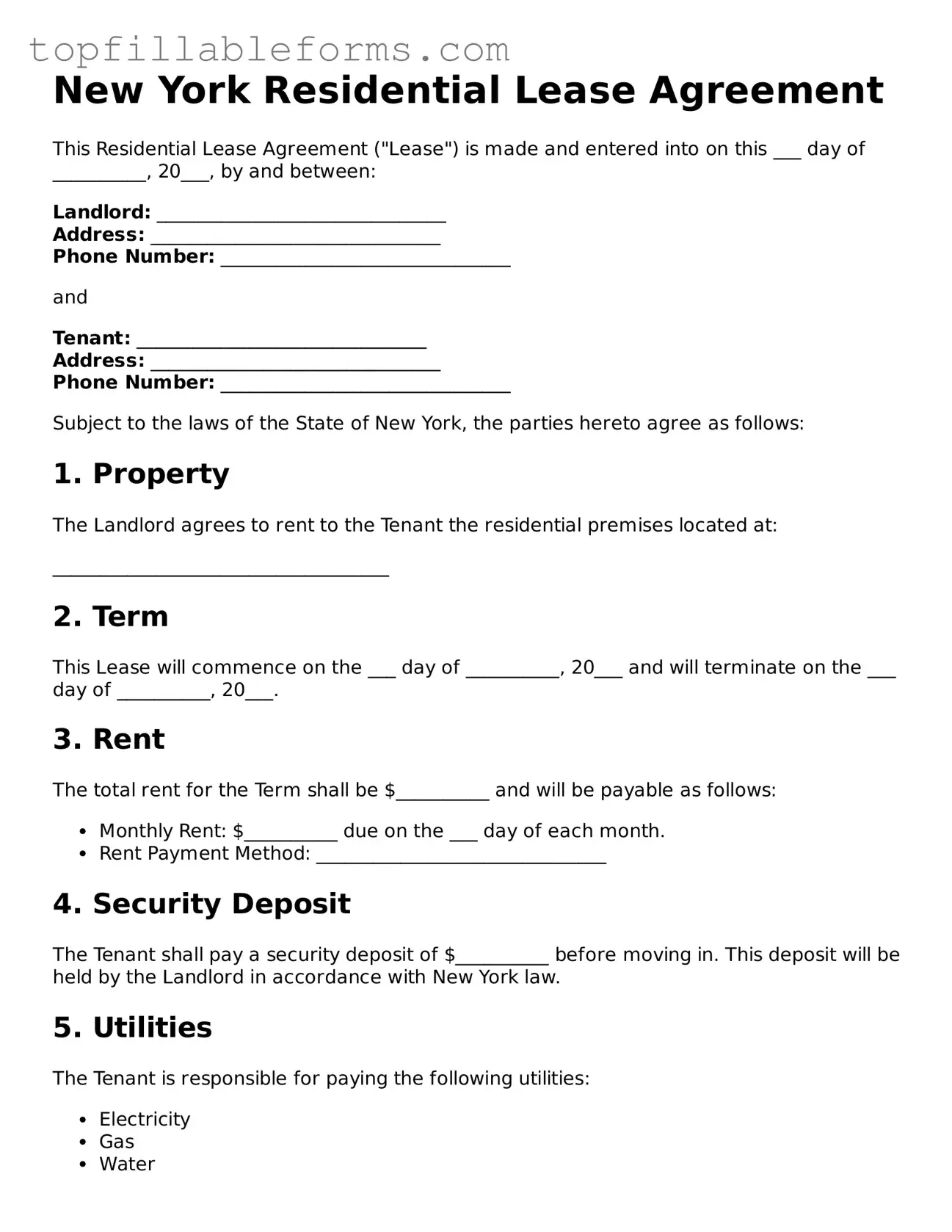New York Residential Lease Agreement
This Residential Lease Agreement ("Lease") is made and entered into on this ___ day of __________, 20___, by and between:
Landlord: _______________________________
Address: _______________________________
Phone Number: _______________________________
and
Tenant: _______________________________
Address: _______________________________
Phone Number: _______________________________
Subject to the laws of the State of New York, the parties hereto agree as follows:
1. Property
The Landlord agrees to rent to the Tenant the residential premises located at:
____________________________________
2. Term
This Lease will commence on the ___ day of __________, 20___ and will terminate on the ___ day of __________, 20___.
3. Rent
The total rent for the Term shall be $__________ and will be payable as follows:
- Monthly Rent: $__________ due on the ___ day of each month.
- Rent Payment Method: _______________________________
4. Security Deposit
The Tenant shall pay a security deposit of $__________ before moving in. This deposit will be held by the Landlord in accordance with New York law.
5. Utilities
The Tenant is responsible for paying the following utilities:
- Electricity
- Gas
- Water
- Internet/Cable
6. Maintenance and Repairs
The Landlord is responsible for maintaining the property. The Tenant must promptly report any maintenance issues to the Landlord.
7. Use of Premises
The premises are to be used solely for residential purposes. Unauthorized commercial activity is prohibited.
8. Termination
Either party may terminate this Lease by providing written notice at least ___ days before the end of the Term.
9. Governing Law
This Lease shall be governed by the laws of the State of New York.
10. Signatures
By signing below, both parties agree to all terms outlined in this Lease.
Landlord Signature: ____________________________ Date: _______________
Tenant Signature: ____________________________ Date: _______________
